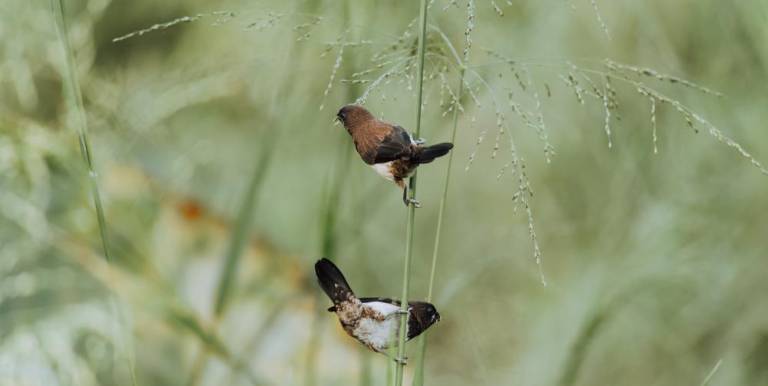What you can do to encourage the number of birds

Steps anyone can take in their backyard to make it more eco-friendly. Hint: Mow less.
Have you noticed that there are fewer birds, butterfly and moths these days? According to a United Nations report, there’s been a 45 percent decline in the U.S. insect population in the last 40 years. Cornell reports that number of birds in the United States has diminished 30 percent over the past 50 years. Without the help of birds and beneficial insects, our environment faces ecosystem decline.
The national Pollinator Pathway Project movement has grown up to help. It identified simple changes that anyone who wants to restore our environment can make to help reverse these trends. Small, at home solutions, such as mowing less, growing native plants (which support native insects), and avoiding the use of harmful pesticides can make a big difference in the effort to create a bird- and pollinator-friendly community.
A first step, is to participate in the national event, No Mow May. Not mowing in May, allows early bloomers, like dandelions and clover to nourish the indigenous and returning pollinator population.
A second step is to plant native species. Many insects breed on specific native plants. The relationship between Milkweed and Monarch Butterflies is well-known, but many other native bugs and insects need specific native plants to propagate. As entomologist Doug Tallamy, author of “Nature’s Best Hope”, suggests, “Remember that we are choosing plantings to fill particular ecological holes, and plants native to the region are almost always far better at performing local ecological roles that plants introduced from somewhere else.”
Thirdly, avoid harmful pesticides. After attracting pollinators, it’s important not to kill them off. An added bonus is keeping lawns and meadows safe for of children and pets.
Here are some tips to create a fully pollinator-friendly landscape:
· Decide only to buy native plantings in the future.
· Refrain from mowing until June and then mow some of your lawn less frequently. (With Lyme disease in our area, it’s important to keep some heavily frequented areas very short).
· Leave leaves on the ground until spring (Many insects need winter cover).
· If there is space, create your own pollinator-friendly native grass and wildflower meadow.
Preserving pollinators is so important that nearby by areas like Woodstock, Nyack, and Putnam County have established Pollinator Pathway organizations. Using public/private partnerships, they are building inter-woven networks of eco-friendly landscapes for pollinators. Both the Audubon Society and the Warwick Valley Gardeners have made encouraging pollinators part of their mission statements. Locally, Sustainable Warwick (Sustainablewarwick.org) is launching a Pollinator Pathway initiative.